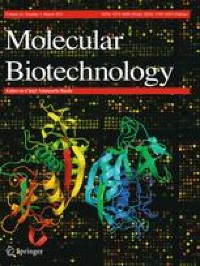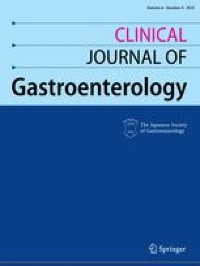|
Medicine RSS-Feeds by Alexandros G. Sfakianakis,Anapafseos 5 Agios Nikolaos 72100 Crete Greece,00302841026182,00306932607174,alsfakia@gmail.com
Πληροφορίες
Τρίτη 20 Απριλίου 2021
Real-time automotive night-vision system for drivers to inhibit headlight glare of the oncoming vehicles and enhance road visibility
Biorecovery of nanogold and nanogold compounds from gold-containing ores and industrial wastes
|
Evaluation of VEGF-A in platelet and microRNA-126 in serum after coronary artery bypass grafting
|
DNA-derived nanostructures selectively capture gram-positive bacteria
|
Development of a miRNA Sensor by an Inducible CRISPR-Cas9 Construct in Ciona Embryogenesis
|
Chitosan Versus Chitosan-Vanillin Modified: An Evaluation of the Competitive Adsorption of Five Emerging Contaminants
|
Impact of Pre-Chemotherapy Education with Audio Visual Methods on the Self-Efficacy of Symptom Management in Patients with Cancer
|
Validation of the atherothrombotic risk score for secondary prevention in patients with acute myocardial infarction: the J-MINUET study
|
Small bowel T-cell lymphoma: a MEITL-ing diagnosis
|
Determination of Significant Prognostic Factors for Maxillary Gingival Squamous Cell Carcinoma in 90 Cases
|
Giant Osteoma of the Mandible: Report of a Rare Case with Review of Literature
|
Unilateral versus bilateral nodal irradiation: Current evidence in the treatment of squamous cell carcinoma of the head and neck
|
Αρχειοθήκη ιστολογίου
-
►
2023
(366)
- ► Φεβρουαρίου (184)
- ► Ιανουαρίου (182)
-
►
2022
(2814)
- ► Δεκεμβρίου (182)
- ► Σεπτεμβρίου (213)
- ► Φεβρουαρίου (264)
- ► Ιανουαρίου (262)
-
▼
2021
(3815)
- ► Δεκεμβρίου (229)
- ► Σεπτεμβρίου (276)
-
▼
Απριλίου
(326)
-
▼
Απρ 20
(25)
- Real-time automotive night-vision system for drive...
- Biorecovery of nanogold and nanogold compounds fro...
- Evaluation of VEGF-A in platelet and microRNA-126 ...
- DNA-derived nanostructures selectively capture gra...
- Development of a miRNA Sensor by an Inducible CRIS...
- Chitosan Versus Chitosan-Vanillin Modified: An Eva...
- Impact of Pre-Chemotherapy Education with Audio Vi...
- Validation of the atherothrombotic risk score for ...
- Small bowel T-cell lymphoma: a MEITL-ing diagnosis
- Determination of Significant Prognostic Factors fo...
- Giant Osteoma of the Mandible: Report of a Rare Ca...
- Unilateral versus bilateral nodal irradiation: Cur...
- An Alternative Explanation for Difficulties with S...
- Early postoperative serum albumin levels as predic...
- Phosphorylation of MYL12 by Myosin Light Chain Kin...
- Age and cancer treatment factors influence patient...
- Intracranial arachnoid cysts and epilepsy in child...
- Prognostic value of the pulse pressure amplitudes,...
- Myxofibrosarcoma: Another mimicker of meningioma
- Need for head and neck repositioning to restore el...
- Downregulation of Caveolin-1 and Upregulation of D...
- Seltener Tumor im Oberlid
- Therapie von Sprachentwicklungsstörungen: Eine Lei...
- β-Ecdysone attenuates cartilage damage in a mouse ...
- Prognostic Factors for the Outcome of Salivary Gla...
-
▼
Απρ 20
(25)
- ► Φεβρουαρίου (64)
-
►
2020
(5754)
- ► Δεκεμβρίου (401)
- ► Σεπτεμβρίου (365)
- ► Φεβρουαρίου (754)
- ► Ιανουαρίου (894)
-
►
2019
(146)
- ► Δεκεμβρίου (19)
- ► Σεπτεμβρίου (54)








